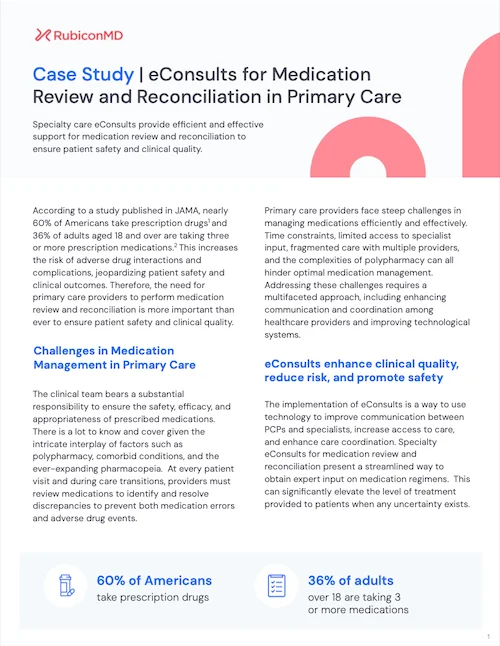eConsult Transcript
PCP submission
42 y/o M patient was recently discharged from the hospital with dx of DKA and DM insulin-dependent. He has not been compliant with Lantus 63 units and ran out of insulin approx 5 days prior. He has been on an ADA diet since D/C but since D/C his BS has averaged 269. He was placed on 36 units of lantus and a sliding scale of analog insulin 140-170 1 unit 171-200 2 units 201 -230 3 units and so forth. His lunch today revealed pre lunch BS 355 and he gave himself 7 units and 2 hours postprandial his BS was 374. I have a referral placed for him to see endo and possibly start an insulin pump. He does not have good insurance as he has a high deductible. He is on patient assistance with lantus through manufacturer.
How would you adjust his insulin at this point? Any thoughts on other tx? Thanks for your help.
Specialist response
Great question. I would reapportion his insulin to roughly match the ~63 daily units he was on before, but with the usual anticipated 50/50 basal/prandial split. If cost is an issue, we can make NPH at bedtime his basal insulin and R his prandial insulin. He will need to take the mealtime R 20 to 30 minutes before he eats. Both of these can be bought for about $25 per vial at Walmart. So his new regimen might look like: -33 units of NPH (or Lantus) at bedtime -11 units of R 20 to 30 units before each meal, held if he is NPO These doses almost always need to be titrated over time. If he wants to continue to use a correction dose based on the pre-meal BG, it can be calculated using the rule of 1800, that is, 1800 divided by the total daily insulin: 1800/66 = ~30. So for every ~30 mg/dl that the patient is above the 130 mg/dl goal pre-meal, an additional unit of insulin could be added: BG >130–> +1 unit (for 12 units total) BG >160–> +2 units BG >190–> +3 units And so on… Correction factors work best in patients with some capacity for critical thinking and with some drive to succeed; if he’s a tough customer adherence-wise, fixed doses might be better to start with. If he experiences a rapid decrease in needed insulin doses to maintain euglycemia, this could represent Flatbush diabetes. If that happens, let me know, and we can work on transitioning him to metformin. Does that plan sound reasonable? If not, or if new questions or issues come up, please don’t hesitate to message me back. I hope this is helpful.
PCP follow up
Thank you for your help!!! I had discussion with the patient and over the weekend he is giving himself regular insulin between 15 and 16 units (11 units plus sliding scale) of insulin before meals and 2 hours post eating he is running 300-400 BS. He is also giving lantus 33 units. I also started him on lasix 20mg daily for couple of weeks as he was having a cough and cxr2v revealed he was fluid overloaded from his hospitalization-FYI.
Specialist follow up
Thanks for the update. That’s frustrating. I thought he’d see control sooner. To get him to a reasonable level of control, we could abandon the correction dose temporarily and begin titrating his insulins according to the attached “Five Steps to Freedom” algorithm. We could start with 42 units Lantus daily and 13 units insulin with each meal. Every day his premeal fingersticks are >130 mg/dl, he would go to the next line on the page. Once he started to see some sugars <130 mg/dl premeal, we could resume his correction dose and fine-tune things. The fluid overload could be insulin edema. If so, it will improve on its own with continued treatment, but probably not until his sugars are a little better.
